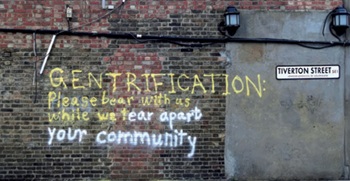Electrical test equipment for use on low voltage electrical systems GS38
Contents |
[edit] Introduction
Electrical test equipment for use on low voltage electrical systems was published in 2015 by the Health and Safety Executive. It is widely referred to as Guidance Note GS38 (fourth edition).
[edit] Electricity at Work Regulations 1989
GS38 is part of a series of electrical safety guidance notes associated with mandatory requirements set out in the Electricity at Work Regulations 1989. These regulations cover aspects such as design, installation and use of electricity in places of work.
The Electricity at Work Regulations 1989 require tradespeople, technicians, contractors and other professionals in control of all or part of an electrical system to ensure it is safe to use and that it is maintained in a safe condition. These requirements impose legal duties on electrically competent people to ensure that all aspects are covered.
Beneath these mandatory requirements sit other codes of practice and guides including GS38. Compliance with these, whilst not mandatory, can contribute significantly to proving that relevant parts of the mandatory requirements of the Electricity at Work Regulations have been met.
[edit] Specifics of GS38
Guidance included in G38 is intended for electrically competent people who use electrical test equipment on low voltage electrical systems and current test equipment. It is meant for those who may be involved in electrical testing, diagnosis and repair.
GS38 provides advice about how to select and use equipment in a safe manner for circuits with rated voltages not exceeding 1000V ac. Equipment covered in the guidance includes:
[edit] Related articles on Designing Buildings
- Electrical safety in the private rented sector.
- Electrician.
- Electrical safety.
- Electrotechnical Assessment Specification.
- Electrotechnical assessment specification for use by certification and registration bodies.
- Electrotechnical Assessment Specification guidance for installers.
- Safe isolation for low voltage.
- Safety.
[edit] External resources
Featured articles and news
Retrofit 25 – What's Stopping Us?
Exhibition Opens at The Building Centre.
Types of work to existing buildings
A simple circular economy wiki breakdown with further links.
A threat to the creativity that makes London special.
How can digital twins boost profitability within construction?
The smart construction dashboard, as-built data and site changes forming an accurate digital twin.
Unlocking surplus public defence land and more to speed up the delivery of housing.
The Planning and Infrastructure Bill
An outline of the bill with a mix of reactions on potential impacts from IHBC, CIEEM, CIC, ACE and EIC.
Farnborough College Unveils its Half-house for Sustainable Construction Training.
Spring Statement 2025 with reactions from industry
Confirming previously announced funding, and welfare changes amid adjusted growth forecast.
Scottish Government responds to Grenfell report
As fund for unsafe cladding assessments is launched.
CLC and BSR process map for HRB approvals
One of the initial outputs of their weekly BSR meetings.
Architects Academy at an insulation manufacturing facility
Programme of technical engagement for aspiring designers.
Building Safety Levy technical consultation response
Details of the planned levy now due in 2026.
Great British Energy install solar on school and NHS sites
200 schools and 200 NHS sites to get solar systems, as first project of the newly formed government initiative.
600 million for 60,000 more skilled construction workers
Announced by Treasury ahead of the Spring Statement.
The restoration of the novelist’s birthplace in Eastwood.
Life Critical Fire Safety External Wall System LCFS EWS
Breaking down what is meant by this now often used term.
PAC report on the Remediation of Dangerous Cladding
Recommendations on workforce, transparency, support, insurance, funding, fraud and mismanagement.
New towns, expanded settlements and housing delivery
Modular inquiry asks if new towns and expanded settlements are an effective means of delivering housing.
























